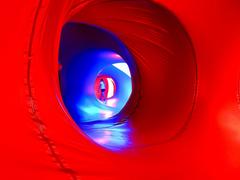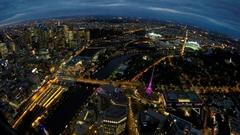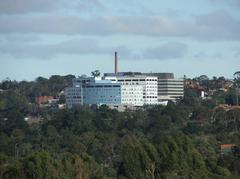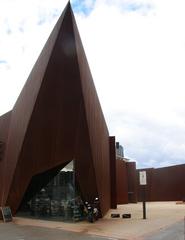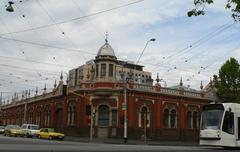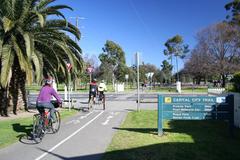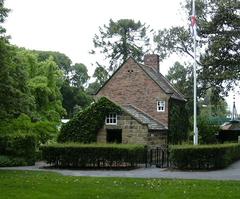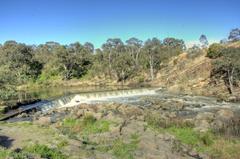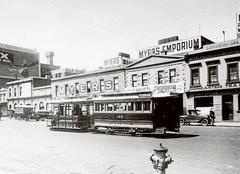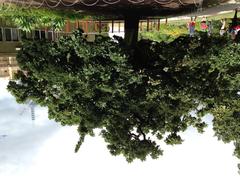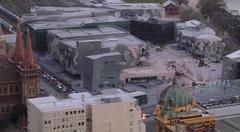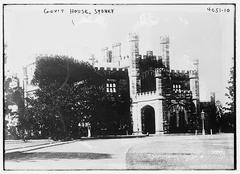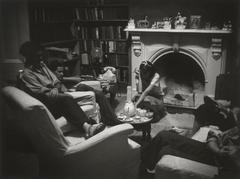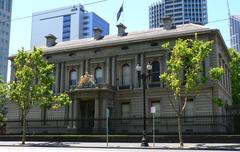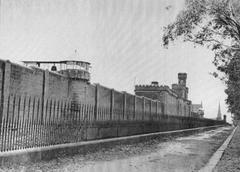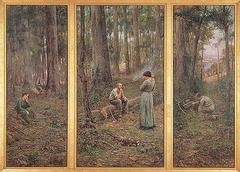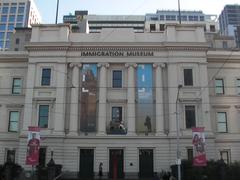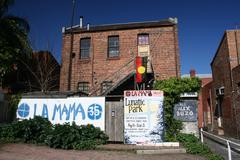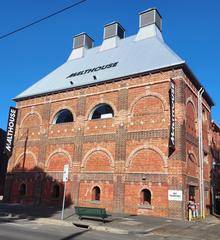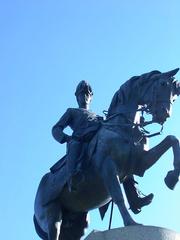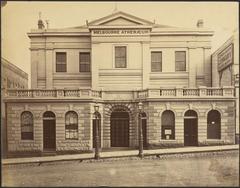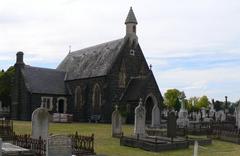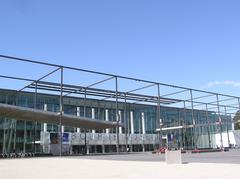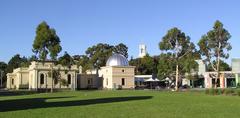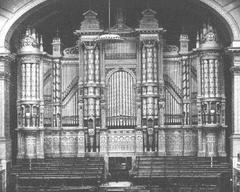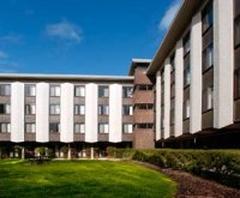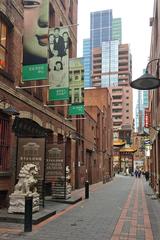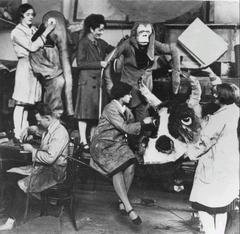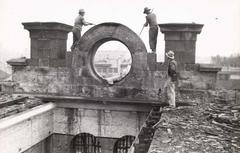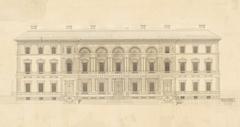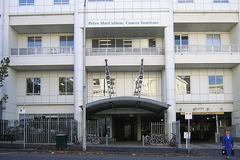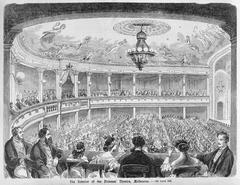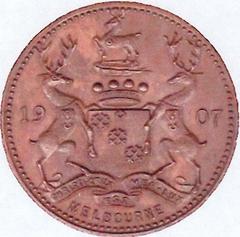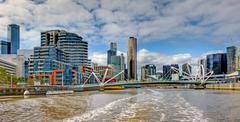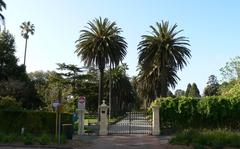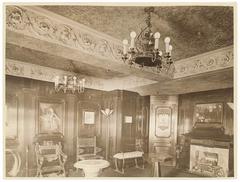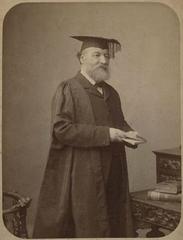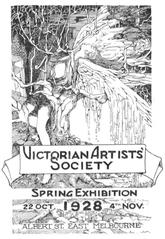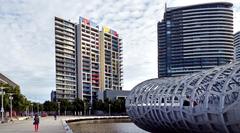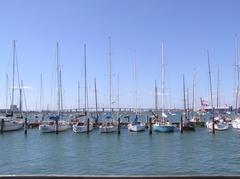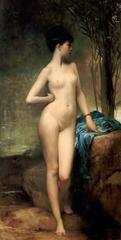University of Divinity Melbourne: Visiting Hours, Tickets, and Historical Sites Guide
Date: 03/07/2025
Introduction: History and Cultural Significance
The University of Divinity in Melbourne stands as Australia’s oldest specialist institution in theological education and research. Established in 1910 as the Melbourne College of Divinity by a unique act of the Parliament of Victoria, its creation filled a significant academic gap at a time when theology was excluded from the curricula of Australia’s major universities. The University’s foundation was a landmark in global education, as it became the world’s earliest stand-alone degree-granting body in theology. Built upon an ecumenical coalition of Christian denominations, it evolved into a national federation of theological colleges spanning five states, serving as a model for interdenominational cooperation and academic innovation (University of Divinity Governance; Vox: Growing theological university eyes new role).
Visitors to the University of Divinity can explore its historic campuses and chapels throughout Melbourne and its suburbs—most notably in Box Hill and Parkville—where heritage architecture and spiritually significant spaces coexist with modern facilities. The University is not only a center of theological learning but also welcomes the public during business hours, offering guided tours, special lectures, and public events that illuminate its rich heritage and ongoing relevance (University of Divinity Visitor Information; University of Divinity – Contact).
This guide provides a detailed overview of the University’s history, academic milestones, visitor information—including hours and accessibility—and highlights nearby Melbourne cultural landmarks. Whether you are a prospective student, researcher, or cultural tourist, discovering the University’s unique structure and offerings will enrich your experience in Melbourne’s vibrant educational landscape.
Table of Contents
- Introduction
- Historical Overview
- Visiting the University of Divinity
- Significance in Australian Higher Education and Religious Studies
- Frequently Asked Questions (FAQ)
- Conclusion
- Call to Action
Historical Overview
Founding and Early Years (1910–1950s)
The University of Divinity, originally the Melbourne College of Divinity (MCD), was founded in 1910 by an act of the Victorian Parliament (University of Divinity Act 1910). Its establishment addressed the exclusion of theological education from Australian university curricula due to concerns about academic rigor and sectarian conflict (Vox: Growing theological university eyes new role). Unlike contemporaries such as the Australian College of Theology, the MCD had the authority to confer degrees from its inception, setting a global precedent in theological education.
The MCD’s founding coalition of six Christian denominations was a remarkable achievement in early 20th-century Australia, promoting ecumenical cooperation and academic freedom from the outset.
Expansion and Ecumenical Milestones (1950s–1970s)
Throughout the mid-20th century, the MCD operated as a consortium of autonomous theological colleges, each retaining its denominational identity while collaborating academically. The 1950s and 1960s marked a gradual inclusion of religious studies in new Australian universities, but the MCD remained the premier institution for advanced theological education.
A significant milestone came in 1972 when legislative changes allowed the Roman Catholic Church to join the MCD’s governance, making it one of the first global examples of Protestant and Catholic collaboration in theological education (Vox: Growing theological university eyes new role).
Academic Innovation and Professionalisation (1980s–2000s)
The late 20th century saw major innovation at the MCD, particularly under leaders like Reverend Dr Harold Pidwell (In Memoriam: Reverend Dr Harold Pidwell). New professional degrees such as the Master of Ministry and Doctor of Ministry Studies were introduced, expanding the institution’s offerings in line with international standards.
In 2001, the MCD was recognized by the Commonwealth as a Schedule I institution, enabling access to major research funding and significantly increasing its research capacity (In Memoriam: Reverend Dr Harold Pidwell). This period also consolidated the collegiate model, where each college maintained its distinct ethos within a shared academic framework (University of Divinity Governance).
Transition to University Status and National Expansion (2011–2025)
The transition to university status in 2011 marked the institution’s formal recognition as the University of Divinity, Australia’s only “university of specialisation” (University of Divinity Governance). Subsequent regulatory reforms led to its registration as an Australian University by TEQSA in 2021.
By 2022, the University expanded nationally, incorporating new member colleges in Perth, Adelaide, and Brisbane, increasing both its geographical footprint and denominational diversity (Vox: Growing theological university eyes new role). Despite a relatively small student body (around 1,650), it remains a leader in theological education in Australia.
Visiting the University of Divinity
Location and Accessibility
The University’s administrative headquarters are at 90 Albion Road, Box Hill, Victoria, set on the peaceful St Paschal Estate (University of Divinity – Contact). The campus is easily reached via public transport—Box Hill train station, tram route 109, and several bus lines serve the area. The University operates as a collegiate federation, with member colleges spread across Melbourne and other states.
Collegiate Structure and Main Colleges
The University comprises eleven colleges, each representing different Christian denominations. Notable colleges and their locations include:
- Trinity College Theological School (Anglican): Situated in Parkville, with a renowned chapel (Trinity College Handbook).
- Catholic Theological College (Catholic): Located near St Patrick’s Cathedral in East Melbourne, featuring a significant theological library.
- Whitley College (Baptist): Found in Parkville, celebrated for its welcoming community and gardens.
- Pilgrim Theological College (Uniting Church): Based at the Centre for Theology and Ministry in Parkville, focusing on social justice and ecumenism.
Other colleges include Stirling Theological College, Australian Lutheran College, Eva Burrows College, Yarra Theological Union, St Athanasius College, St Francis Theological College, and the Australian College of Christian Studies (University of Divinity – Colleges).
Visiting Hours and Tours
- Hours: Most administrative offices and libraries are open Monday to Friday, 9:00 AM–5:00 PM. Hours for chapels, libraries, and public areas may vary; check individual college websites for specifics (University of Divinity – Contact).
- Tours: Selected colleges offer guided tours by appointment. These tours highlight heritage architecture, collegiate life, and the University’s theological collections. Advance booking is recommended, especially during peak periods.
- Special Events: The University hosts public lectures, graduation ceremonies, and exhibitions throughout the year. Keep an eye on the University Events Calendar for details.
Tickets and Entry
- General Entry: Free of charge for campus and chapel visits.
- Ticketed Events: Some special exhibitions, lectures, or events may require tickets or registration. Check event listings for details.
Accessibility
The University strives for inclusive access. Most buildings provide ramps, elevators, and accessible restrooms, though some heritage-listed sites may have limitations. Visitors with specific needs should contact the relevant college in advance (Time Out Melbourne – Accessibility).
Facilities and Visitor Highlights
- Heritage Architecture: Visit stunning chapels like Trinity College’s, with Gothic revival features and a vibrant music program.
- Gardens and Grounds: Enjoy landscaped gardens at Box Hill and Parkville, ideal for reflection or strolls.
- Australian Religious Archive: Located at Box Hill, the archive features exhibitions and public programs on Australia’s religious history (Vox Divinity – Archive).
- Divinity Library: Houses over 62,000 theological volumes (Unischolars).
- Cafés and Amenities: Colleges provide cozy cafés and communal spaces for refreshments.
- Photographic Spots: Capture the University’s historic buildings, chapels, and serene grounds.
Nearby Historical and Cultural Sites
The University’s campuses are close to many of Melbourne’s top cultural and historical attractions, including:
- St Patrick’s Cathedral
- Federation Square
- Royal Exhibition Building
- National Gallery of Victoria
- Royal Botanic Gardens
Combining your visit to the University with these sites offers a holistic view of Melbourne’s educational and cultural heritage.
Significance in Australian Higher Education and Religious Studies
The University of Divinity occupies a distinct place in Australian higher education. Established to fill the absence of theological studies in mainstream universities, it has become a model of ecumenical cooperation, academic innovation, and denominational diversity (University of Divinity Governance). Its collegiate structure fosters intimate learning communities and supports a wide array of academic offerings, contributing to mature, pluralistic religious education in Australia (Vox: Growing theological university eyes new role).
Frequently Asked Questions (FAQ)
Q: Where is the University of Divinity located?
A: The main administration is in Box Hill, Melbourne, with colleges across five states.
Q: What are the visiting hours?
A: Most sites are open Monday to Friday, 9:00 AM–5:00 PM. Check with specific colleges for variations.
Q: Are guided tours available?
A: Yes, some colleges offer guided tours by appointment.
Q: Is there an entry fee?
A: General entry is free; ticketed events or exhibitions may require advance registration.
Q: Is the University accessible to people with disabilities?
A: Most buildings are accessible, but confirm with individual colleges for heritage buildings.
Q: Can visitors attend lectures or public events?
A: Many events are open to the public. See the events calendar for details.
Q: How do I get there?
A: The Box Hill campus is accessible by train, tram, or bus; see the Contact Page for details.
Conclusion
The University of Divinity represents over a century of theological education, academic innovation, and ecumenical collaboration in Australia. Its historic campuses, diverse colleges, and expanding public programs provide a welcoming and enriching experience for visitors, students, and scholars alike. Whether you are interested in heritage architecture, spiritual reflection, or Australia’s evolving educational landscape, the University of Divinity offers a unique destination within Melbourne.
Call to Action
To plan your visit, discover upcoming events, or explore virtual tours and images, visit the University of Divinity’s official website. For travel tips and more Melbourne historical site guides, follow the University on social media or download the Audiala app for personalized visitor experiences and updates.
References and Further Reading
- University of Divinity Governance
- Vox: Growing theological university eyes new role in Australian sector
- University of Divinity Visitor Information
- University of Divinity Contact Page
- University of Divinity Events
- Trinity College Handbook
- Unischolars
- Vox Divinity – Archive
- Study Abroad Aide – University of Divinity
- Time Out Melbourne – Accessibility
- Whitley College – Graduation
- Smapse
- University Reviews
